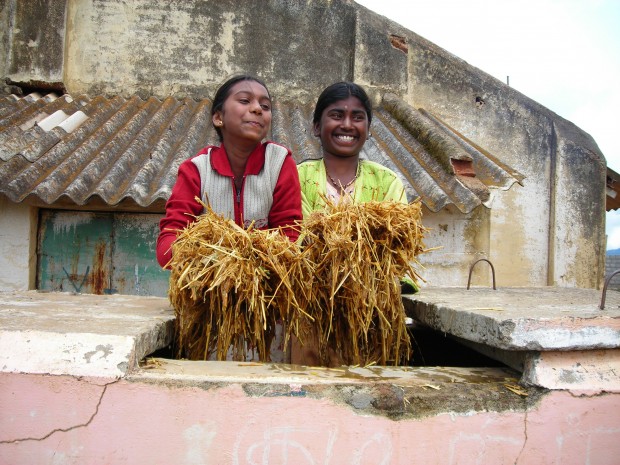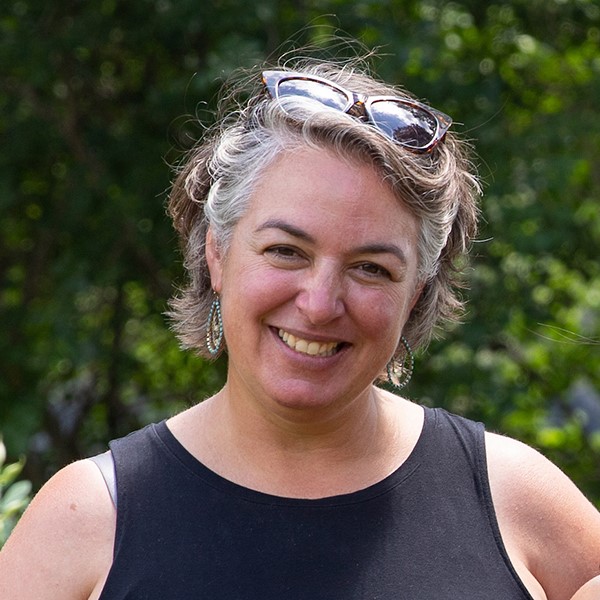Educating for Sustainability Around the Globe

By Jen Cirillo
Every summer my colleagues and I engage with hundreds of educators who are interested in sharpening their skills and growing their understanding of what educating for a sustainable future looks like. They come hoping to gather seeds for their practice to take home and plant in their own communities. Stories have been a powerful tool for creating these seeds—stories of ideas, projects, and collaborations.
We know that educators learn from each other through what researchers call “vicarious learning.” Reading a story written by a peer educator, who like you engages young people in improving quality of life in their communities, is inspiring and motivates you to act. These stories might detail a model, highlight student narratives and work, make connections to curricular resources or XXX.
I remember getting ready for my first professional learning program here at Shelburne Farms Institute for Sustainable Schools in the summer of 2003. I displayed my collection of Green Teacher magazines fanned out on a table. We put reading time on the agenda and encouraged teachers to select a magazine and get cozy. Each educator chose an inspiring story from the magazine and then shared what the takeaway from the story was for them. That way, in a short amount of time, the group “read” dozens of articles and took away inspiration for their classrooms and students. (Now we bring in these stories through online publications, but the impact is the same.)
Here are a few of my favorite inspiring stories, from Global/Development Education, which I hope will spark vicarious learning for you! Find yours among the 25 stories in this category.
Ecojustice Education through Pictures (Fall 2016) by Erin Sperling and Hilary Inwood help make the connections visible between ecological and social justice. They offer Ecojustice as a framework that utilizes familiar pedagogical approaches of place-based learning and action. They offer a simple way to get started, “begin where we are” and through inquiry exploring questions of privilege and power. They then talk about ways for educators to integrate ecojustice including arts-based approaches, using hands-on learning connected with a children’s book, and connecting to the classroom practice which they model in their workshops. They remind us that this work can be hard both professionally and personally but that facilitators of ecojustice work should be ready to lean into the discomfort.
 Inspiring Eco-Clubs in South India (Summer 2010) content is still relevant today and connects to issues educators in rural communities around the globe face – young people leaving for cities and those that stay having little opportunities in their home places. This story reminds us of the power of learning outside of the classroom in the community. The Eco-Club supported students, in particular those most systemically disadvantaged, in learning about their place through hands-on activities durings visits to special areas and farms. Students’ confidence, knowledge and skills grew through the program and these students then became leaders in their community.
Inspiring Eco-Clubs in South India (Summer 2010) content is still relevant today and connects to issues educators in rural communities around the globe face – young people leaving for cities and those that stay having little opportunities in their home places. This story reminds us of the power of learning outside of the classroom in the community. The Eco-Club supported students, in particular those most systemically disadvantaged, in learning about their place through hands-on activities durings visits to special areas and farms. Students’ confidence, knowledge and skills grew through the program and these students then became leaders in their community.
Green Conversations in the Elementary Classroom (Spring 2021)by JoEllen Schuleman and Amber Carlin-Mishkin is a new favorite. They highlight what we all know that sustainability isn’t just for science but it is an interdisciplinary topic rich with connections for all learners. They offer practical ways to use the SDGs in the K-6 classroom and invite educators to use literacy-based activities to engage young learners with the global goals. WIth three key qualities for choosing books and two amazing examples they guide us through how to help our students to become global thinkers. I’m printing this one for our staff to help select books for the summer camp library!
In Exploring Antarctica through Art (Winter 2017), Madeline Crouse and Skye Morét offer integrated arts-based learning to support learning about Antarctica’s geography and marine ecosystem. They outline three arts-based activities – sculptures, mobiles, and collage – that build from images of marine creatures. They focus on developing visual literacy and integrating art and science through the project. With a growing interest of educators to create integrated units of study to support student learning, this art and science project inspires me to get out the art materials this summer for our adult learners.
We always offer our educators a chance to explore stories in different media so if text based learning isn’t for them they might choose a podcast, webinar, TEDtalk, or radio show. One of my favorite’s is Building Kids’ Citizenship Through Community Engagement with Bob Coulter. Bob talks about projects in his community and offers principles to transfer to your own place. He talks about the role of technology, the concept of freedom, and when people are at their best (hint when they are creative and help themselves and others – plus a bunch more!). Bob also has an incredible book of the same title as the webinar that is definitely worth reading this summer.
For me each of these articles offers inspiration, practical tools or project ideas, and useful frameworks. I encourage educators to write their stories down, perhaps in collaboration with their students, to share with others in big or small ways, planting seeds of hope for education that creates a healthier and more just world for all.
 Jen Cirillo is the director of professional learning at Shelburne Farms Institute for Sustainable Schools, located on the shores of Lake Champlain in Vermont.
Jen Cirillo is the director of professional learning at Shelburne Farms Institute for Sustainable Schools, located on the shores of Lake Champlain in Vermont.
Leave a Reply
You must be logged in to post a comment.





